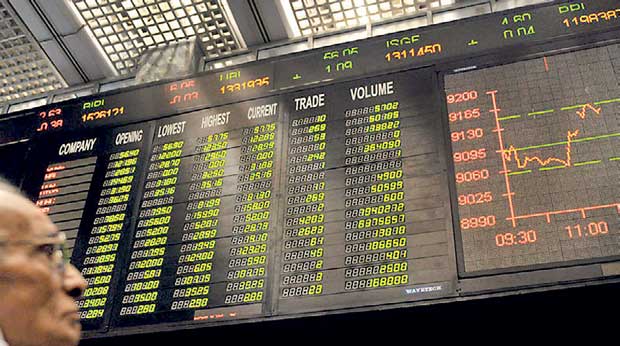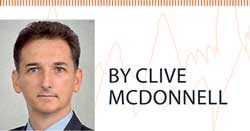Reply To:
Name - Reply Comment
Last Updated : 2024-04-20 11:02:00

 Equity markets in Asia ex-Japan have had their best start to the year since 2009, rising almost 20 percent in US dollar terms. China and Korea – our preferred markets – have led the pack, posting gains of 25 percent and 21 percent, respectively. A key question for investors is whether this pace of gains can be maintained. To answer this, we need to identify what has driven the gains so far this year, assess the sustainability of these drivers and the potential for new catalysts.
Equity markets in Asia ex-Japan have had their best start to the year since 2009, rising almost 20 percent in US dollar terms. China and Korea – our preferred markets – have led the pack, posting gains of 25 percent and 21 percent, respectively. A key question for investors is whether this pace of gains can be maintained. To answer this, we need to identify what has driven the gains so far this year, assess the sustainability of these drivers and the potential for new catalysts.
The drivers of Asian market trends in the first half include US dollar weakness, a solid earnings recovery and diminishing chances of implementation of a punitive US import tariff considered by the new administration. The US dollar has declined almost 6 percent against its main trading partners from its peak in late 2016. A weaker dollar, besides allowing Asian central banks full control of their monetary policy, is generally supportive for regional asset markets as it results in an increase in capital inflows, boosting demand for stocks and bonds.
The flows have been supported by a strong earnings recovery. Consensus forecasts suggest earnings growth in Asia ex-Japan is likely to increase by 18 percent this year, following a one percent decline in 2016. China is leading the earnings recovery. Meanwhile, South Korean equities, for which exports are an important growth driver, have been rerated by investors amid easing of political risks and reduced likelihood of the implementation of a new system of the US import tariff.
Looking ahead, the factors behind the Asian equity rally in the first half are likely to remain in place for the rest of the year – the US dollar may weaken modestly, lead indicators of earnings remain positive and the likelihood of implementation of the US import tariff still appears low.
Moreover, there are some new catalysts which could help sustain the rally. These include:
i. A focus on stability in China and the need to engineer a positive wealth effect ahead of the National Congress of the Communist Party of China (NCCPC) in autumn.
ii. Policy paralysis in Washington, which is actually good news for Asian and global asset markets as it reduces the risk of additional US stimulus at time when there is little spare capacity in the US economy. A fiscal stimulus in this environment is likely to hasten monetary policy tightening in the US, likely boosting the dollar – which is negative for capital flows into Emerging Markets.
Focusing on China, which is one of our two preferred markets in the region, the recent decision by MSCI, a provider of index data, to include the locally-listed, so-called ‘A shares’ in its global list of equity market indices is a significant development. Although the short-term impact is likely to be modest, given the weight of the included shares in the MSCI Emerging Market index is a mere 0.7 percent, looking ahead to 2025, the weight of the A shares could increase to 12 percent.
We also believe the Chinese government is keen to support a positive wealth effect from rising real estate prices ahead of the NCCPC in autumn. Although efforts to cool real estate markets in Tier I and II cities may continue, capital appreciation outside these cities is likely to be welcomed by authorities as it helps reduce excess supply of houses and encourages development outside the major cities which are overwhelmed by congestion and pollution and where social services have come under pressure.
‘Trapped liquidity’ is the other likely driver of equity markets in China for the rest of the year. Chinese companies have been on an acquisition spree until recently, having spent US $ 246 billion in overseas acquisitions alone in 2016. This is reminiscent of the acquisitions undertaken by Japanese companies prior to the bursting of Japan’s bubble in the late 80s.
Keen not to repeat the same mistakes, the policymakers have withheld approvals for overseas acquisitions this year and pressured banks to reduce the supply of credit granted by their overseas branches to these acquisitive companies. As a result, acquisitions have plummeted 67 percent in the first four months of this year. We view the tightening of rules on overseas acquisitions as a positive development as it traps liquidity within the domestic economy. In addition, it will help reduce the growth in corporate debt in China, given that most of these acquisitions are debt-financed.
Korea is another of our preferred markets in Asia where we believe there are a number of positive developments that will support equities in the second half. The most significant of these is the decline in political risk following the change in government which has led to an easing of tensions with China. Other supporting factors include reforms aimed at improving shareholder returns and accelerating corporate restructuring.
The decision by the prior Korean government to allow the US to set up the Terminal High Altitude Area Defence (THAAD) missile system to defend Korea in the event of an attack from its northern neighbour resulted in a boycott of Korean goods and department stores in China. Newly-elected President Moon has suspended further deployment of THAAD, which is likely to ease tensions with China and help revive the sale of Korean products there. Corporate reform is an ongoing theme in Korea and one which is likely to continue under President Moon. Over the past three years, Korean dividend yields have doubled, from an admittedly low one percent, while return on equity has risen from 8 percent to 11 percent. Companies are cancelling treasury shares, increasing capital available for distribution to shareholders.
There are similar positive developments around the region, with a growing number of companies focused on increasing shareholder returns through higher dividends, raising return on equity and increasing emphasis on corporate restructuring.
Taken together, we believe there are clear catalysts that may enable markets in Asia ex-Japan and China and Korea in particular, to post solid returns in the second half and outperform global equity markets. On the three occasions since 1995 when Asia ex–Japan posted positive double-digit gains in the first-half period, markets generated an average return of 19 percent in the second half.
(Clive McDonnell is Head of Equity Strategy at Standard Chartered Private Bank)

Add comment
Comments will be edited (grammar, spelling and slang) and authorized at the discretion of Daily Mirror online. The website also has the right not to publish selected comments.
Reply To:
Name - Reply Comment
On March 26, a couple arriving from Thailand was arrested with 88 live animal
According to villagers from Naula-Moragolla out of 105 families 80 can afford
Is the situation in Sri Lanka so grim that locals harbour hope that they coul
A recent post on social media revealed that three purple-faced langurs near t